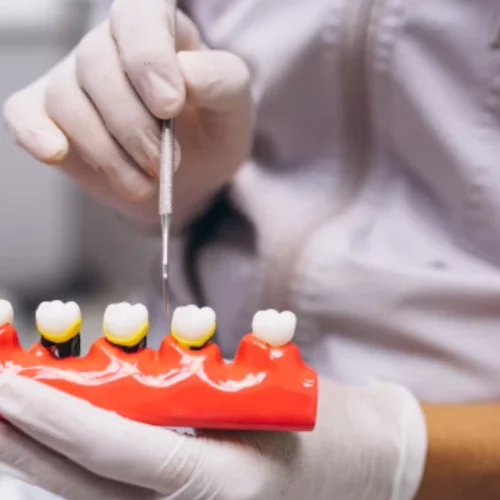Root canal treatment (find out more), also known as endodontic therapy, is one of the most effective ways to save a tooth that’s severely decayed, infected, or damaged. Although it has a reputation for being painful, modern root canal treatments are comfortable, efficient, and often no more unpleasant than getting a simple filling. The procedure removes infection from inside the tooth and preserves its structure, preventing the need for extraction.
What Is a Root Canal?
Inside every tooth lies a soft tissue called the pulp, which contains nerves, blood vessels, and connective tissue. When this pulp becomes infected or inflamed—usually due to deep decay, cracks, or trauma—it can cause severe pain or an abscess.
A root canal treatment removes the infected pulp, disinfects the inside of the tooth, and seals it to prevent further infection. The outer structure of the tooth remains intact, allowing you to chew and smile confidently without losing your natural tooth.
When Is Root Canal Treatment Needed?
A root canal is typically recommended if you experience one or more of the following:
- Persistent toothache or throbbing pain
- Sensitivity to hot or cold that lingers
- Swelling or tenderness around the gum
- Darkening or discolouration of the tooth
- A small bump (abscess) on the gum near the affected tooth
Your dentist will usually confirm the need for treatment using an X-ray to check for infection at the root.
Step-by-Step: What Happens During a Root Canal
A root canal is usually completed in one or two appointments depending on the severity of infection.
1. Anaesthesia and Isolation
The dentist begins by numbing the area completely so you don’t feel pain. A small rubber sheet (called a dental dam) is placed around the tooth to keep it dry and free from saliva.
2. Access and Cleaning
A small opening is made at the top of the tooth to access the pulp chamber. Special instruments are used to remove the infected or dead tissue from inside the tooth and shape the root canals.
3. Disinfection and Filling
The canals are thoroughly disinfected with antibacterial solutions, then filled with a rubber-like material called gutta-percha to seal them.
4. Sealing and Restoration
Finally, the tooth is sealed with a temporary or permanent filling. In most cases, a dental crown is fitted later to strengthen the tooth and restore its full function.
Does It Hurt?
Despite its reputation, a root canal is not painful. With modern anaesthetics and technology, most patients report feeling little to no discomfort during the procedure. Any soreness afterwards is usually mild and can be managed with standard pain relief.
Aftercare and Recovery
After treatment, your tooth may feel slightly tender for a few days. This is normal and typically resolves on its own. You can return to normal activities quickly, but avoid biting hard foods on the treated tooth until the final crown is placed.
To maintain long-term success:
- Practice good oral hygiene (brushing, flossing, and mouthwash)
- Visit your dentist regularly for check-ups
- Avoid chewing on very hard foods or ice
Root Canal vs. Extraction
The goal of a root canal is to save your natural tooth. Extraction should only be considered when the tooth cannot be restored. Keeping your own tooth helps maintain bone structure and bite alignment, avoiding the need for replacements like implants or bridges.
How Long Does a Root Canal Last?
When properly restored and cared for, a root canal-treated tooth can last a lifetime. The key is ensuring the tooth is protected with a crown and maintaining good dental hygiene.
Final Thoughts
Root canal treatment is a highly successful, tooth-saving procedure that can relieve pain, stop infection, and restore your smile. Rather than fearing it, think of it as an investment in your long-term oral health.
If you’re experiencing tooth pain or sensitivity, don’t wait—early treatment can mean the difference between saving your tooth and losing it.




